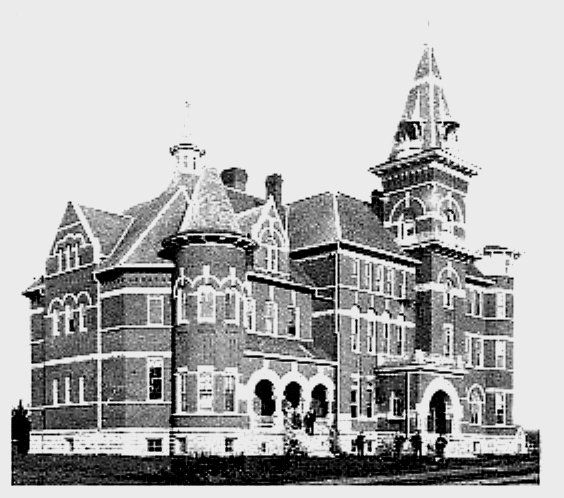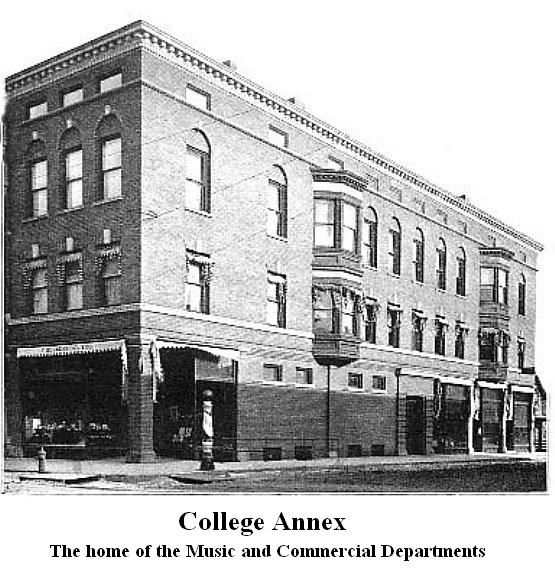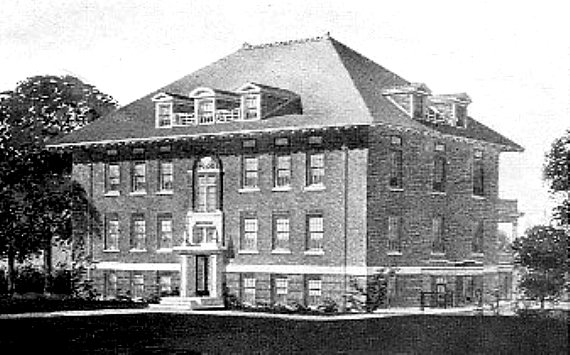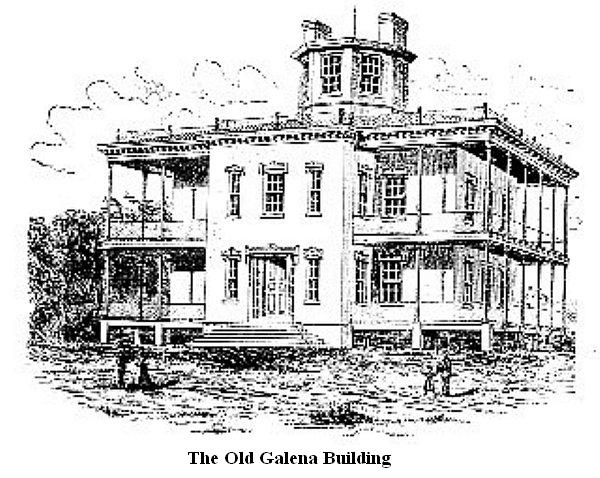|
OUR Alma Mater is not of mushroom growth, nor a merely transitory phenomenon. It is the outcome of a slow and deeply rooting evolution. Almost three score years ago our Federal Government purchased a picturesque, ten-acre site on the brow of a hill just south of the city of Galena, Illinois, and soon after that erected a solid brick structure for a Marine Hospital. The venture was not a success. In 1863 the Government announced the sale of the plant at public auction to the highest bidder. Two Methodist ministers, William Schreiner and Frederick Kluckhohn, and several aggressive laymen of that city, realizing the need of a school which offers secondary eduction to an increasing class of youth of limited opportunity, bought the property for six thousand dollars at a high rate of interest and personally assuming all responsibility. An organization was consummated, a board of trustees elected, all necessary arrangements rapidly made, and the Northwestern German-English Normal School began its first decade with Professor Jacob Wernli, a spirited, energetic, well-trained educator, as its Principal and a half dozen of able assistants. One year after the opening of the institution it was placed under the auspices of the Northwest German Conference of the Methodist Episcopal Church, under whose fostering care it stands today. The decade closed with Professor B. F. Merten at
the head of the school and about the same number in the Faculty. While
the current expenses were met from year to year, not a dollar
of the original investment had been paid. The furnishings, laboratory
equipments, library, society halls, and dormitory
Materially this decade had but little to show; in real fruits, however, in straight forward, ascending, life-making careers, in furnishing its share of the marrow of public and private society it has a place in the annals of the upper Mississippi valley and is felt farther abroad. The second decade of the evolution of Charles City College in 1878 makes a season of transition toward a standard college. The old debt was wiped out by contributions from the ministers in the Conference and a number of loyal laymen. The Rev. C. Schultz set on foot a movement for accumulating productive endowment, very modest in its beginnings but potent in its possibilities and inspiration toward greater things. Professor Merton's resignation caused the appointment of the Rev. F. Kopp, Presiding Elder of the Galena District, as nominal head of the school and Professor Jacob Boss as acting Principal.  The student body gradually awoke to higher aspirations and called for advanced work. Slowly but steadily theological and collegiate branches were added to the curriculum, the equipments and the library improved, the literary societies lifted to a higher plane and the Young Men's Christian Association organized. The first school journal of German Methodism, "The College Call," began its monthly visitation in the homes of the patrons and friends. Mr. Kopp was succeeded in office by Rev. Emil Uhl, who transferred his activities from the district into the school in 1886 as its president. After one year he resigned and Frederick Schaub was elected president. Since his student days in '75 to '78 he had always been in vital touch with his Alma Mater as an alumnus aggressive in organizing the Alumni and Ex-Student's Association and working for higher ideals of the institution, as member of the Faculty and later also of the Board of Trustees. At the close of this decade the institution developed in to an expanding, aspiring constituency which clamored for greater things. The quality of the “product” continued sound and virile, with little exception a class of efficient, honest, persevering producers, a body of alumni and ex-students of which no one need be ashamed.  The third decade of our history as an educational institution was augurated with numerous signs of expansion. Measures slowly but inevitably crystalized for moving the College farther west, and in 1891 it opened its doors for ambitious youth at its present location. Since that time development has touched every phase of her interest. The growth has been sturdy, sound, and symmetrical, tho not as fast as the rapid advancement of College standards and increasing requirements of educational Boards demand. With heroic effort the College finally swung into lines as an “Accredited School and has maintained this position up to this time. It is also a recognized "Teachers' Training School." To remain in these positions will require more strenuous and loyal support than many folks anticipate. The case rests with the ever-increasing army of alumni, ex-students, loyal friends, and loyal sympathizers throut the patronizing territory.  When President Schaub resigned from the Presidency in 1894 on account of impaired health, Professor J. F. Hirsh was elected as his successor. His resignation in 1903 caused the election of Doctor F. E. Hirsh, who served in this capacity till 1911. Since his resignation Doctor Frederick Schaub served as Acting President one year and Doctor W. F. Finke is now closing his second year in that capacity. The latter, together with Doctor Schaub, stands as the connecting between the old and the new in the history of Charles City College, the representatives of a former generation in the present onward march of progress. When the new President, William Charles Hilmer, A. M., Ph. D., assumes the duties of his office on July 1, 1914, he will find a wide-awake, efficient, progressive, and aggressive Christian Faculty, a healthy mixture of thoroughly trained young forces with these veterans. 
Gymnasium |
 accommodations were exceedingly meager. Quite in contrast with
the insufficient appurtenances was the class of students that
emanated from its bosom. A heterogeneous mass of sturdy
young men and plastic young women, mostly crude but striving
and strong, entered at almost all times of every school year,
coming largely from modest but clean, honest homes. Today
they have their representatives in all walks of life, many of them
more or less conspicuous and influential in leadership. Their
children have grown in maturity and, after also receiving their
fundamental training in the Alma Mater of the parents, have in
many cases aimed higher and are now in the “A-Class” of citizenship,
home-making, professional life, educational efficiency,
public service, and Church activity.
accommodations were exceedingly meager. Quite in contrast with
the insufficient appurtenances was the class of students that
emanated from its bosom. A heterogeneous mass of sturdy
young men and plastic young women, mostly crude but striving
and strong, entered at almost all times of every school year,
coming largely from modest but clean, honest homes. Today
they have their representatives in all walks of life, many of them
more or less conspicuous and influential in leadership. Their
children have grown in maturity and, after also receiving their
fundamental training in the Alma Mater of the parents, have in
many cases aimed higher and are now in the “A-Class” of citizenship,
home-making, professional life, educational efficiency,
public service, and Church activity.